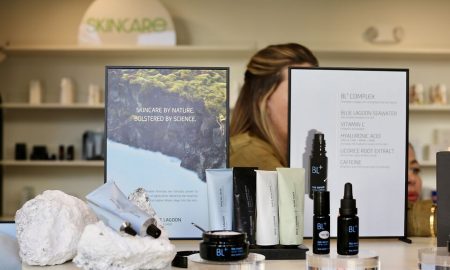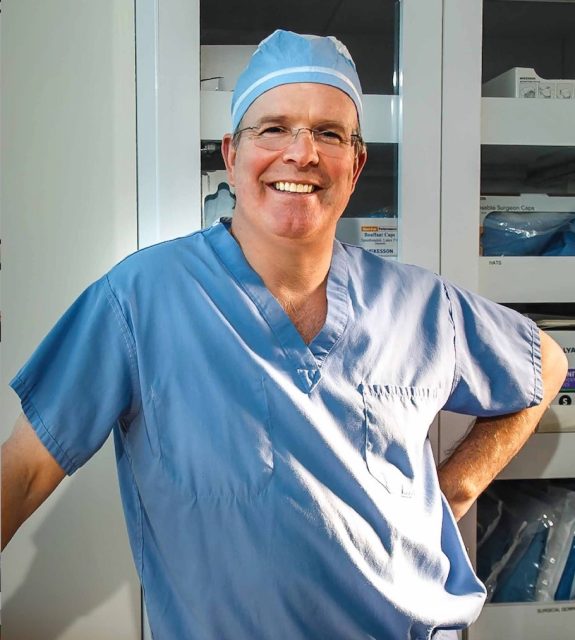An internationally-known double-board certified facial plastic surgeon, Dr. P. Daniel Ward has addressed the aesthetic concerns of thousands of patients helping them restore and improve their self-confidence and self-esteem. Distinguished by attention to detail, a down-to-Earth approach, and a passion for his work, Dr. Ward is recognized as a top facial plastic surgeon around the world. Dr. Ward’s extensive educational credentials include a five-year residency in Otolaryngology-Head & Neck Surgery followed by completion of a Facial Plastic Surgery Fellowship. Haute Beauty chats with Dr. Ward to discuss the importance of cartilage support or structural grafting in rhinoplasty.
 Photo Credit: ShutterstockHaute Beauty: Because cartilage is so abundant in the nose, how is the grafting process done for the most natural results?
Photo Credit: ShutterstockHaute Beauty: Because cartilage is so abundant in the nose, how is the grafting process done for the most natural results?
One of the tenets of modern rhinoplasty is the use of structural grafts. One of the main reasons for the scary, unpredictable, nightmarish results for which some celebrities achieved infamy, e.g., Michael Jackson and Joan Rivers, were the result of a poor understanding of the importance of structural support in the nose. The old way of performing rhinoplasty was to cut out the cartilage to make the nose smaller. We now understand that cutting out cartilage can lead to some disastrous complications. By providing proper structural support of the nose, we minimize the risk of many complications.
HB: Are there multiples purposes of cartilage grafts?
Cartilage grafts are used in a wide variety of ways in rhinoplasty. They are used to add support and strength and are used to help improve breathing as well as improve the appearance of the nose. For example, we frequently will use cartilage grafts to help support some of the lateral cartilages of the nose (the cartilages on the sides of the nose) that can help lead to improved nasal airflow. We will also use cartilage grafts on the tip of the nose to help create a more pleasing shape and contour of the nose.
HB: What are the benefits of structural grafting in rhinoplasty?
When you stop and think about the nose and how rhinoplasty works, it is pretty amazing. We do the surgery and rely on the body’s own healing mechanisms to create and form scar tissue where we want it to form. Adding cartilage grafts is a tool that is necessary to help provide proper healing and support for the body’s healing process.
View this post on Instagram
HB: How do you know if you need a cartilage graft for your nose job?
There are some times when the cartilage is not needed for rhinoplasty. However, those cases are pretty limited. In almost all cases, we need cartilage grafts to help create a nose that heals properly, looks good, and functions well. There has recently been a resurgence of an older technique called preservation rhinoplasty that allows for less use of cartilage grafting. Time will tell if this current trend continues and what changes this technique will lead to with the use of cartilage grafting in the nose.
HB: Is cartilage taken from different parts of your body? If so, what cartilage is the best for rhinoplasty?
We typically take the cartilage from the nasal septum. The septum of the nose consists of cartilage and bone. When we take cartilage from the septum, we are always careful to leave enough septum present to help make sure that there is enough support of the nose. If there is not enough cartilage in the septum, we typically take the cartilage from the ear or from the rib. Using ear or rib cartilage does not lead to any long-term problems with the ear or rib. For example, taking ear cartilage does not change the shape of the ear.
Many surgeons will often use rib from a cadaver that has been radiated to make it safer and to work better in the nose. Within the rhinoplasty surgery community, there is some debate as to whether this cartilage is as good as using your body’s own cartilage. My opinion is that using your body’s own tissue is safer and leads to better results and so this is the option that I almost always pursue.
HB: How does cartilage support the septum?
The septum, which is made of cartilage at the front of the nose, will sometimes need further support. We will sometimes add some cartilage grafts to the native septum to create better stability and strength to help hold it in the midline and to withstand the effects of warping with time. Cartilage can also be used to help provide further support in conjunction with the septum. For example, a commonly used technique is to use some cartilage that is surgically attached to the septum to help support the nasal tip. Using this technique requires that the surgeon first be sure to secure the septum in a stable, midline position that allows for the use of further cartilage grafts off the stable septum.

























